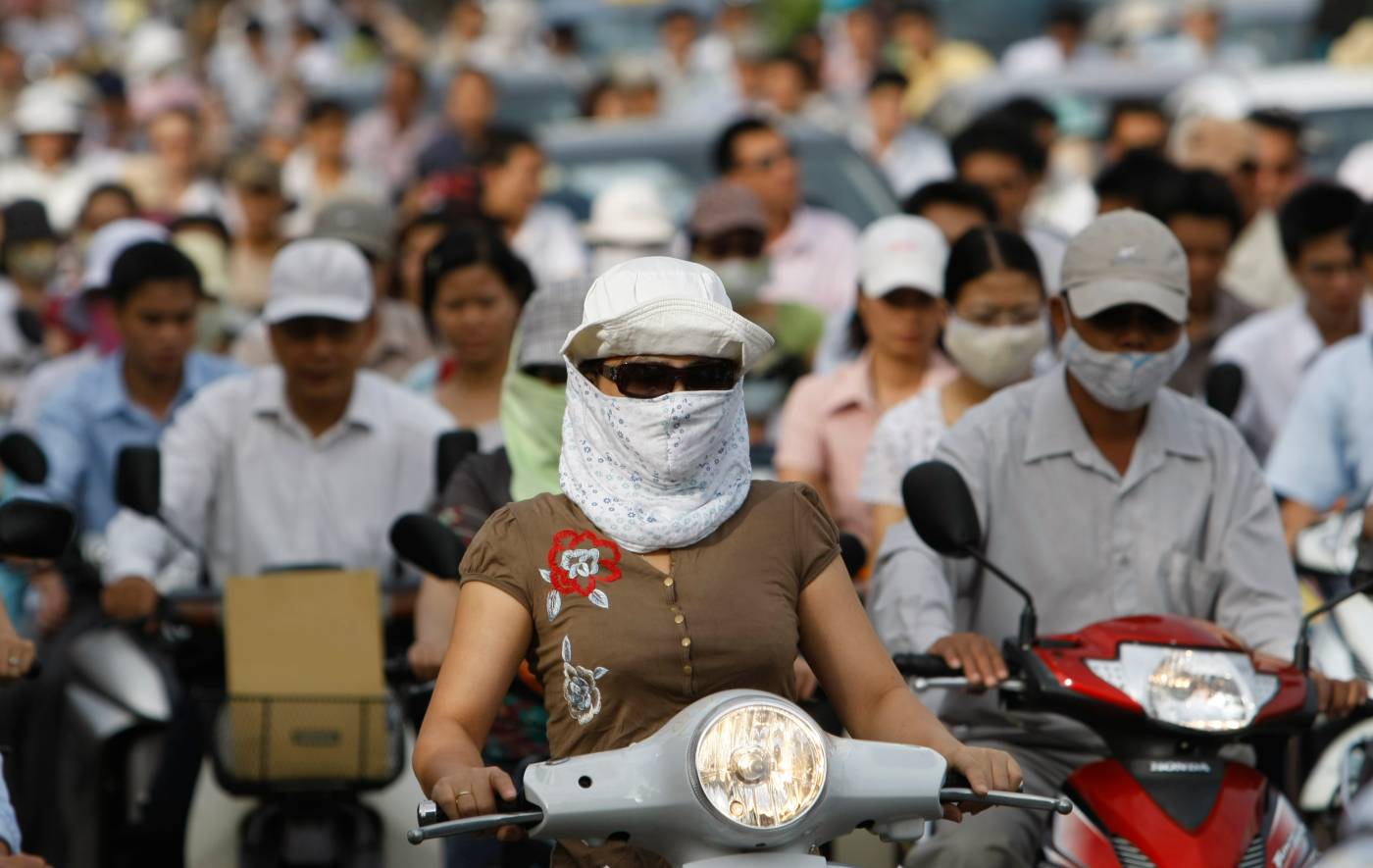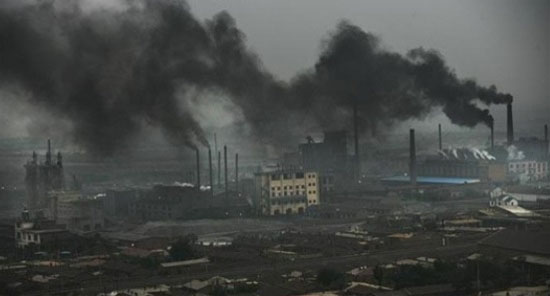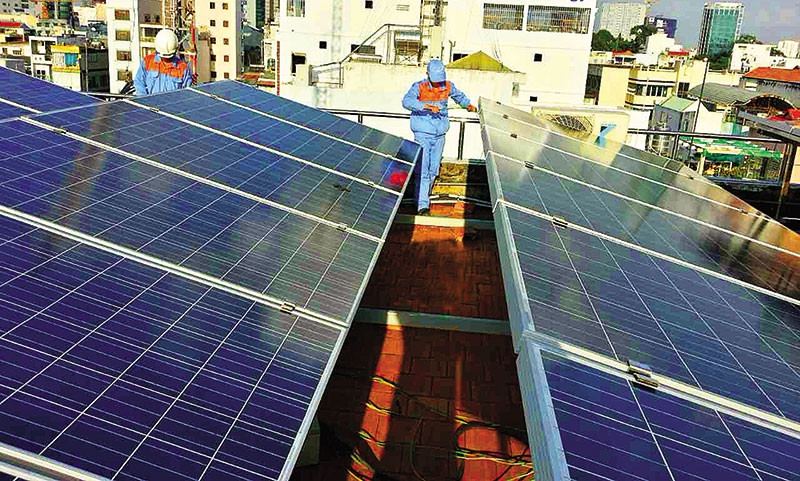
| Author :
China’s road map for the next five years seems set to cement the country’s remarkable shift from an energy-guzzling, heavily polluting economy toward a cleaner, greener model — a change with big implications for the environment and global energy markets.
Chinese leaders this week signed off on the broad contours of the 13th Five-Year Plan, which seeks to map out the country’s economic and social development plans from 2016 through 2020. It’s the first such plan crafted under President Xi Jinping, and its fundamental goal is to create a “moderately prosperous” society in time for the 100th anniversary of the Chinese Communist Party. (It’s also the unlikely subject of a viral, government-approved, pysynchedelic video)
While it won’t be formally adopted until early next year, the plan points toward a period of more moderate economic growth, continued economic rebalancing away from heavy industry and toward services, and a renewed commitment to environmental issues and clean energy. Chinese officials have hinted that the final version of the new blueprint could even take drastic steps, like caps on coal consumption and a ban on new coal-fired power plants, in addition to launching new nationwide programs to curb greenhouse gas emissions. In other words, after almost four decades of breakneck growth at all costs, China’s leaders seem to have officially enshrined a “new normal,” as researchers at the London School of Economics have dubbed the country’s transformation.
What’s especially telling is that Chinese leaders have renewed their commitment to a cleaner economy despite a year of economic headwinds and lower growth. China has struggled this year to reach its targeted goal of 7 percent GDP growth, which would already be a huge decline from the double-digit growth it posted each year since the beginning of the century. That green commitment isn’t political window dressing but rather a way to usher the world’s second-largest economy to a course that is more sustainable over the long run, according to China’s own leaders.
“There are fundamental, powerful drivers to pursue the new course and pick up the pace [on sustainable policies],” said Paul Joffe, a senior policy analyst at the World Resources Institute, a nonprofit devoted to sustainable energy and environmental policies.
The Chinese shift is especially important coming just a month before the big U.N. climate summit in Paris, where countries are trying to muster the political will to curb greenhouse gas emissions to limit future temperature rises. China, long considered the poster child of dirty development and a barrier to global action on climate just six years ago at the Copenhagen summit, is now widely seen as a catalyst for more environmentally friendly policies.
“We’re on the eve of Paris, and the credibility of China’s actions is a factor there, and it’s also a factor in U.S. domestic debates,” Joffe said. That’s because Republican lawmakers have for years pushed back against the Obama administration’s efforts to clean up the U.S. economy and curb emissions by pointing to China. “That’s getting to be a pretty lame argument,” he said.
Of course, China’s new direction will be bad news for some: Coal miners in the United States and Australia, who were banking on years of reliable demand, have seen their most promising potential market evaporate in little more than a year. As with coal, so with oil: Reduced growth in future Chinese demand for oil is weighing heavily on producers, especially in the U.S. oil patch.
The full details of China’s new five-year plan will emerge early next year. But the party communique released Thursday summarizing the four-day summit of about 200 top Communist leaders lays out clearly just what direction Xi and the rest of the Politburo want China to take. They agreed to “accelerate” new economic development, a reference to the “rebalancing” away from dirty industry and toward leaner sectors such as services. They agreed to promote “green development,” “sustainable development,” “civilized development,” and an “environmentally friendly society.” The party decided to promote a “low-carbon energy system,” including the adoption of a national carbon-trading program, and pledged to boost “environmental protections.”
If faithfully enacted in coming years, all that will likely translate into an economy that keeps growing, even as energy use and greenhouse gas emissions stay stable. That doesn’t mean that China will suddenly be able to slash its energy consumption or drastically reduce its greenhouse gas emissions, as the United States has already done. But it does mean that it could reach its own targets for stabilizing emissions and curbing its hunger for coal much earlier than expected. China expected to keep increasing its emissions until about 2030, but it could now peak years earlier. Coal consumption was expected to keep growing at least until the next decade, but it may already be in terminal decline.
Indeed, over the past year, China has already shown signs that economic growth does not have to go hand in hand with massive energy consumption and pollution. Consumption and production of coal, the main energy source,fell last year, despite economic growth of 7.3 percent, and both have continued to slide this year. (Unfortunately, while coal use is now falling, new accounting measures in China show that the country had actually been using more of the stuff during the heady years of growth.)
A top Chinese energy official said this week at a coal industry conference that the government could put strict limits on overall coal production and consumption in the new five-year plan. Another researcher close to the state economic planning commission said that the Chinese government is mulling a total ban on new coal-fired power plants. That would be easier to do now than just a few years ago because electricity consumption is flat and many coal-fired power plants are running at just a fraction of their capacity, thanks to the economic slowdown and the shift away from heavy industry.
Chinese leaders will have a delicate balancing act to pull off: figuring out how to turn modest economic growth into a “prosperous” society in just five years, without causing massive dislocations at shuttered steel plants, inefficient coal mines, and closed-down factories. Many economists believe that if China struggles to meet its scaled-down growth targets, it will again resort to tried-and-true remedies, especially by injecting billions of dollars into the economy to spur investment in construction, infrastructure, and new industry. That’s because while protests from environmentally conscious middle-class Chinese fed up with air pollution can chip away at the regime’s stability, protests by millions of unemployed Chinese could directly threaten it.
Looking ahead, China may have finally managed to rein in its runaway energy use and unchecked pollution. The next big challenge for Chinese leaders will be to figure out how to roll them back.
“What do they do after they peak? Do they have strong enough policies to achieve a steep decline in emissions? Those are the kinds of things to watch for,” Joffe said.
Photo credit: GREG BAKER/AFP/Getty
https://foreignpolicy.com/2015/10/30/chinas-leaner-and-greener-5-year-plan/?utm_content=buffer7b38a&utm_medium=social&utm_source=twitter.com&utm_campaign=buffer
Leadership in Beijing is set to consolidate a new model of economic development for China that could curb energy use and emissions even earlier than expected.
China’s road map for the next five years seems set to cement the country’s remarkable shift from an energy-guzzling, heavily polluting economy toward a cleaner, greener model — a change with big implications for the environment and global energy markets.
Chinese leaders this week signed off on the broad contours of the 13th Five-Year Plan, which seeks to map out the country’s economic and social development plans from 2016 through 2020. It’s the first such plan crafted under President Xi Jinping, and its fundamental goal is to create a “moderately prosperous” society in time for the 100th anniversary of the Chinese Communist Party. (It’s also the unlikely subject of a viral, government-approved, pysynchedelic video)
While it won’t be formally adopted until early next year, the plan points toward a period of more moderate economic growth, continued economic rebalancing away from heavy industry and toward services, and a renewed commitment to environmental issues and clean energy. Chinese officials have hinted that the final version of the new blueprint could even take drastic steps, like caps on coal consumption and a ban on new coal-fired power plants, in addition to launching new nationwide programs to curb greenhouse gas emissions. In other words, after almost four decades of breakneck growth at all costs, China’s leaders seem to have officially enshrined a “new normal,” as researchers at the London School of Economics have dubbed the country’s transformation.
What’s especially telling is that Chinese leaders have renewed their commitment to a cleaner economy despite a year of economic headwinds and lower growth. China has struggled this year to reach its targeted goal of 7 percent GDP growth, which would already be a huge decline from the double-digit growth it posted each year since the beginning of the century. That green commitment isn’t political window dressing but rather a way to usher the world’s second-largest economy to a course that is more sustainable over the long run, according to China’s own leaders.
“There are fundamental, powerful drivers to pursue the new course and pick up the pace [on sustainable policies],” said Paul Joffe, a senior policy analyst at the World Resources Institute, a nonprofit devoted to sustainable energy and environmental policies.
The Chinese shift is especially important coming just a month before the big U.N. climate summit in Paris, where countries are trying to muster the political will to curb greenhouse gas emissions to limit future temperature rises. China, long considered the poster child of dirty development and a barrier to global action on climate just six years ago at the Copenhagen summit, is now widely seen as a catalyst for more environmentally friendly policies.
“We’re on the eve of Paris, and the credibility of China’s actions is a factor there, and it’s also a factor in U.S. domestic debates,” Joffe said. That’s because Republican lawmakers have for years pushed back against the Obama administration’s efforts to clean up the U.S. economy and curb emissions by pointing to China. “That’s getting to be a pretty lame argument,” he said.
Of course, China’s new direction will be bad news for some: Coal miners in the United States and Australia, who were banking on years of reliable demand, have seen their most promising potential market evaporate in little more than a year. As with coal, so with oil: Reduced growth in future Chinese demand for oil is weighing heavily on producers, especially in the U.S. oil patch.
The full details of China’s new five-year plan will emerge early next year. But the party communique released Thursday summarizing the four-day summit of about 200 top Communist leaders lays out clearly just what direction Xi and the rest of the Politburo want China to take. They agreed to “accelerate” new economic development, a reference to the “rebalancing” away from dirty industry and toward leaner sectors such as services. They agreed to promote “green development,” “sustainable development,” “civilized development,” and an “environmentally friendly society.” The party decided to promote a “low-carbon energy system,” including the adoption of a national carbon-trading program, and pledged to boost “environmental protections.”
If faithfully enacted in coming years, all that will likely translate into an economy that keeps growing, even as energy use and greenhouse gas emissions stay stable. That doesn’t mean that China will suddenly be able to slash its energy consumption or drastically reduce its greenhouse gas emissions, as the United States has already done. But it does mean that it could reach its own targets for stabilizing emissions and curbing its hunger for coal much earlier than expected. China expected to keep increasing its emissions until about 2030, but it could now peak years earlier. Coal consumption was expected to keep growing at least until the next decade, but it may already be in terminal decline.
Indeed, over the past year, China has already shown signs that economic growth does not have to go hand in hand with massive energy consumption and pollution. Consumption and production of coal, the main energy source,fell last year, despite economic growth of 7.3 percent, and both have continued to slide this year. (Unfortunately, while coal use is now falling, new accounting measures in China show that the country had actually been using more of the stuff during the heady years of growth.)
A top Chinese energy official said this week at a coal industry conference that the government could put strict limits on overall coal production and consumption in the new five-year plan. Another researcher close to the state economic planning commission said that the Chinese government is mulling a total ban on new coal-fired power plants. That would be easier to do now than just a few years ago because electricity consumption is flat and many coal-fired power plants are running at just a fraction of their capacity, thanks to the economic slowdown and the shift away from heavy industry.
Chinese leaders will have a delicate balancing act to pull off: figuring out how to turn modest economic growth into a “prosperous” society in just five years, without causing massive dislocations at shuttered steel plants, inefficient coal mines, and closed-down factories. Many economists believe that if China struggles to meet its scaled-down growth targets, it will again resort to tried-and-true remedies, especially by injecting billions of dollars into the economy to spur investment in construction, infrastructure, and new industry. That’s because while protests from environmentally conscious middle-class Chinese fed up with air pollution can chip away at the regime’s stability, protests by millions of unemployed Chinese could directly threaten it.
Looking ahead, China may have finally managed to rein in its runaway energy use and unchecked pollution. The next big challenge for Chinese leaders will be to figure out how to roll them back.
“What do they do after they peak? Do they have strong enough policies to achieve a steep decline in emissions? Those are the kinds of things to watch for,” Joffe said.
Photo credit: GREG BAKER/AFP/Getty
https://foreignpolicy.com/2015/10/30/chinas-leaner-and-greener-5-year-plan/?utm_content=buffer7b38a&utm_medium=social&utm_source=twitter.com&utm_campaign=buffer





.png)


